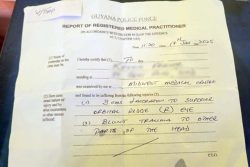Assessments of the longer term impact of COVID-19 on the way we live and a likely time frame for a return to some semblance of normalcy in several key service areas are likely to have to be revisited even as the pandemic continues to show no sign of slipping into retreat mode.
Take the crucial area of air travel for example, where the International Air Transport Association (IATA) has now pushed back its earlier 2023 time line for a return to normalcy in the air travel sector by at least one year to 2024, on account of challenges associated with the containment of the pandemic in the United States and, reportedly, in some developing countries.
With air transport having long become a critical factor in several pursuits that are central to human life, even human survival, the trade association for the sector is now saying that contrary to earlier indications, global air travel is recovering more slowly than had been expected and is now unlikely to return to pre-pandemic levels for at least the next three to four years.
Earlier this week IATA Chief Economist Brian Pearce was reported as saying that while the sector is witnessing a transformation from the preponderance of shutdowns witnessed back in April this year, that trend is now “barely visible.”
The earlier drift towards the reopening of airports that had earlier been hastily closed in order to help check the spread of the pandemic has gradually shifted to a point where some announced airport re-opening dates have now been either pushed back or set aside altogether. At the beginning of July, the Guyana Civil Aviation Authority (GCAA) announced that the country’s earlier disclosed four-phase re-opening plan for the country’s two international airports had been set aside on account of the increase in COVID-19 cases.
Worryingly, the IATA official is quoted as saying that air travel is not keeping pace with growing levels of business confidence in Europe, the USA and China. Statistics, the international travel body reports, indicate that air traffic slipped by 86.5% in June, compared with June 2019.
Across the world, reports of travellers stuck at locations and facing challenges in getting to their desired destinations remain relatively frequent. Meanwhile, various facets of activity associated with key aspects of normal existence, not least commerce and trade, continue to be heavily compromised by restricted airline travel.
Attempts to force the pace of post-COVID-19 normalisation in some countries, including the United States, have met with a discernable measure of pushback from the pandemic. In the Caribbean, economic pressures arising out of the protracted shutdown of key areas of economic activity are gradually being lifted, in the tourism sector particularly, though all this is being done with an eye on the risk of a possible backlash.
IATA’s assessment asserts that the movement towards a sense of normalcy in the global airline industry is “nowhere near the increase in business confidence.” Pearce notes that in the USA, particularly, what had appeared at one point to be a condition of rising confidence has been shoved back by the recent surge in the numbers of COVID-19 cases there.
Setting aside the caution emanating from the travel industry on account of renewed COVID-19 outbreaks, airline travel is also being impacted by weakened consumer confidence and cuts in travel budgets by businesses facing wider economic hardships associated with the impact of the pandemic.











